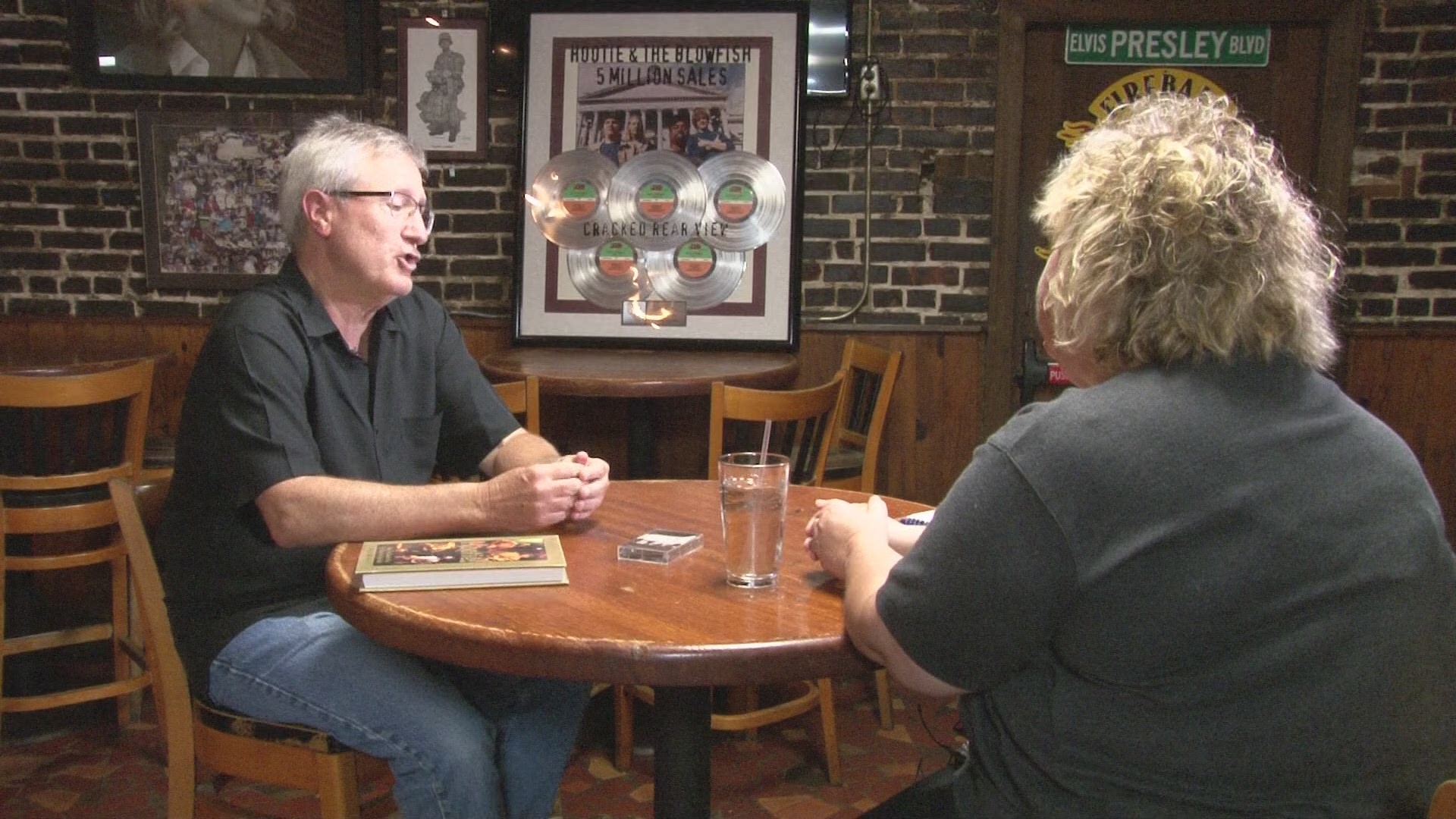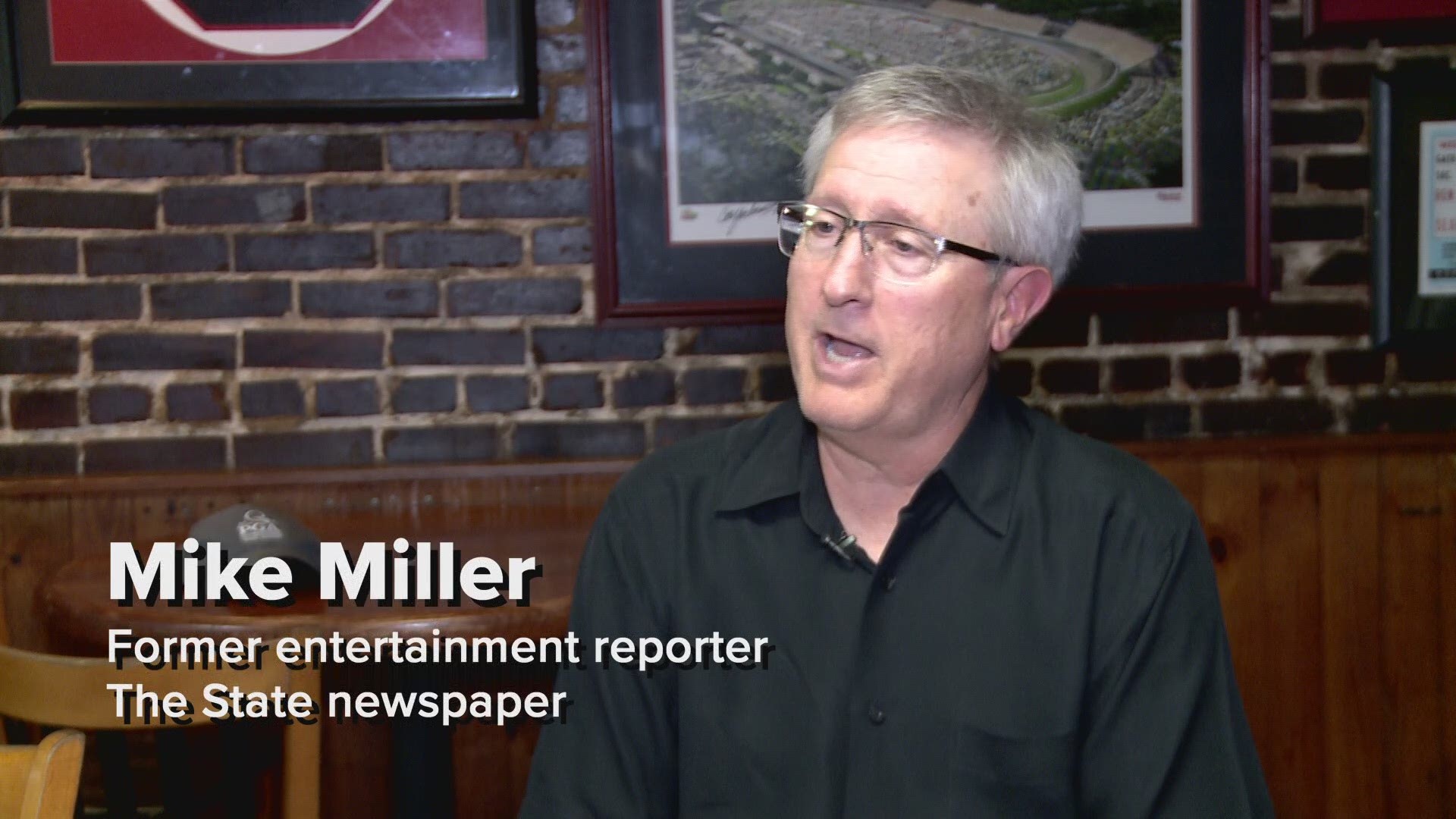COLUMBIA, S.C. — Mike Miller, a former music/pop culture writer for The State newspaper from 1986 to early 2000s, sat down with WLTX at Bar None in Five Points to talk about Hootie and the Blowfish and their 25th anniversary tour.
As part of his beat, he wrote about the band — covering the first live gigs and until well after the band peaked in the mid-90s. As Hootie’s popularity increased, Miller was invited out on the road to experience the life of a band at its peak.
Miller ended up with a new-found appreciation for the group he once described as “a USC college rock party band that did covers” in the newspaper’s Weekend section event calendars.
He says that it wasn’t until Jim “Soni” Sonefeld joined in 1989 as the drummer that the guys in the band started focusing more on original material.
“(Soni) sorta brought their rhythm and tempo back a little slower, and they became more pop-oriented, more of a pop-rock band,” Miller says.
The band started traveling more, too.
“The interesting thing about Hootie and the Blowfish was that they were a Columbia band — from Columbia — but they were never really part of the Columbia music scene,” said Miller. “They were out of town five days a week playing in college towns around the South. There was this circuit that a lot of bands played.”
BACK IN THE DAY
When he started writing about the Columbia scene, Miller says the sound was very diverse and very active.
“There were indie-rock bands like Jebel, Swig, and Danielle Howle and the Tantrums; punk bands, and heavy bands like Isabelle’s Gift (who are still around).
“There was this family of bands in Columbia that was close, they played a lot of shows in Columbia with each other, and Hootie kinda operated outside of that realm. They were more of an out-of-town band that did their thing.
“That’s not to say that they didn’t know the people in town – people in Treadmill Trackstar, Tootie and the Jones, and Calvin and Friends,” said Miller. “They knew all of those people but weren’t part of the scene, as it were.
“In the early 1990s, there was a strong club scene. Especially here in Five Points. You had Rockafellas on Devine, down the street in the early 90s you had Greenstreet’s – and they were booking national acts, like, four or five nights a week. Bands like Hootie and some of the others could open for the bigger name bands. Elbow Room came along a little later, after Greenstreet’s closed, so there was a lot of live music in Five Points at the time.”
“Hootie got on the college circuit, playing clubs in towns like Birmingham, Baton Rouge, Charlottesville, Winston-Salem, and Wilmington. They got to know bands like Johnny Quest in North Carolina, Dash Riprock, Gib Droll, Dave Matthews Band, Spin Doctors – these were the bands that were playing the college circuit in college towns and did really well.”
“They did their own thing and followed their own route. Hootie made their name as a touring band.”
Miller thinks he probably heard Hootie for the first time when they were playing a gig at Rockafellas or Greenstreet’s, sometime in 1989.
He recalls a story: “When Jim Sonefeld joined Hootie, he was already in another band – Tootie and the Jones. So… he went from Tootie to Hootie …and they had the Hootie and Tootie double-bill one night at Greenstreet’s. It was a big night.”
AND THEN THINGS CHANGED
In the summer of 1994, Miller says he got an advance cassette tape copy of Cracked Rear View, Hootie’s first major record label release in the mail.
“I left the office that day and stuck it in my car tape deck in the Honda — popped it in — and it just kinda blew me away. It surprised me completely – the depth, the maturity, the confidence, and how good it was. I wasn’t surprised it was good. I was surprised at the level that the band had risen to make this record.”
Miller continues, “I got home and called Jim Sonefeld and said, you know, ‘dude, I just listened to your album. I don’t even know what to say.’ And he was appreciative. This was probably the middle of June and it came out July 5. They were Number 1 on the Heat Seeker’s chart on Billboard for new acts coming out. That was kinda cool and exciting.”
But it was another incident that really launched Hootie and the Blowfish into the musical stratosphere. Miller tells it best…
“Of course, the story that’s been told a million times is that in early September, when David Letterman was going home one Friday and (had his radio) on WNEW in New York and heard “Hold My Hand.” He comes to work Monday and says ‘I heard this band – Hootie and the Blowfish – and I want them on the show.’
“His producers say, as a matter of fact, the act for Friday night has canceled so we’ll call Atlantic Records (Hootie’s label) and see if we can get Hootie and the Blowfish to play.
“Atlantic Records calls the Hootie office in Columbia.
“The band is in Louisiana playing a show.
“The record company says that the band is wanted to play Letterman’s show on Friday night.
“Hootie’s manager, Rusty Harmon, told the record company that the band had a sold-out show at The Township in Columbia Friday night – they couldn’t cancel the concert in Columbia.
“The record company asks if they could come up to New York early on Friday, tape the Letterman show, and then fly back to Columbia — suggesting that the band could get an early flight back.
“Harmon went one step further and said ‘get them a private jet.’
“And, so, they kinda worked that out… the guys had to drive back from Louisiana in their Econoline van, fly from Columbia to New York that Friday morning. They taped the Letterman show, got back into town around 10 p.m. and had a police escort to The Township — and still played their full 90-minute show. Cravin Melon and (maybe) Treadmill Trackstar opened for Hootie.”
HOOTIEMANIA TAKES HOLD
Things settled down for a bit after that night and then “kinda grew organically,” says Miller. “By the first of 1995, the band had gone platinum, sold over a million copies of Cracked Rear View, and then it snowballed from there. Radio programmers couldn’t play those songs enough – ‘Hold My Hand,’ ‘Time,’ and ‘Only Wanna Be With You.’ ‘Let Her Cry’ was a big hit.
“The band was playing those songs in every town they went – Cracked Rear View went to Number 1 two or three times.”
Miller and photojournalist Pam Royal, also with The State, went out on tour that summer to document the band.
“It’s a fascinating thing… no one expected that level of success.”
Miller says that after a show in Kansas City, he was sitting on the tour bus with guitarist Mark Bryan. “I felt inclined to say something, like, ‘all those years that I wrote about y’all… I kinda feel like I should apologize to you for using a one-sentence description, that you were a cover band.’," he said.
“I told him that I kinda gave much more weight to bands that wrote and performed their own original music, and I just felt that they should be rewarded a little more for the effort. And he totally got it. I mean, he was actually appreciative of it… It made me feel better that I wasn’t dismissing them as an early cover band, but he said, ‘that’s what we were.’ ”

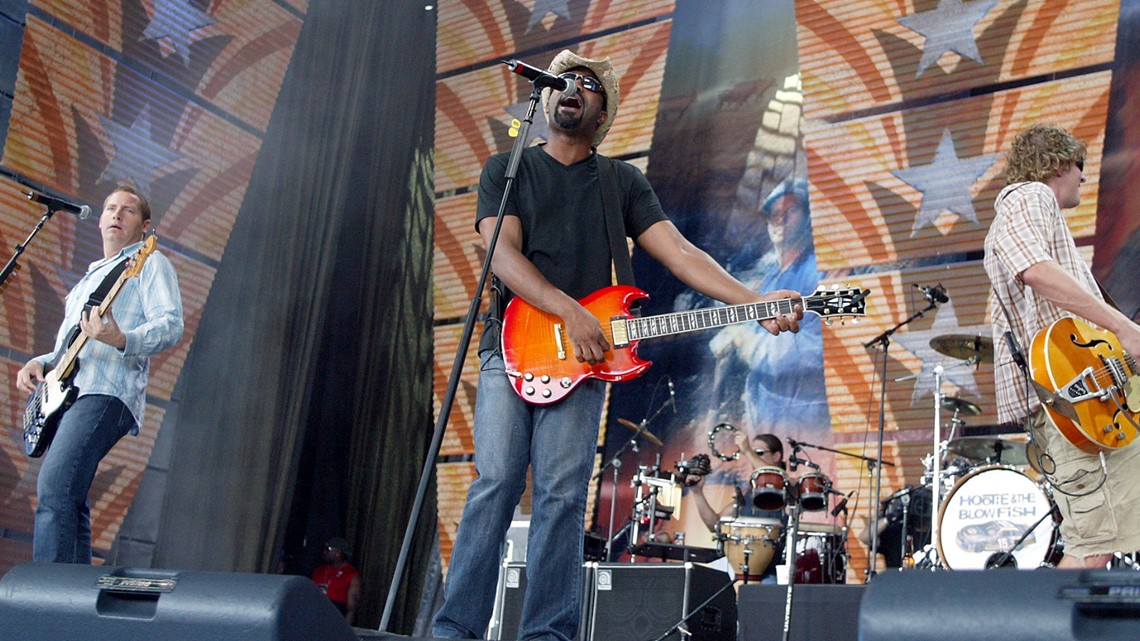
SPOTLIGHT ON COLUMBIA
“That was what, personally, being a native of Columbia, made me feel really good and proud was when you would watch them on stage like in Kansas City or St Louis or somewhere, and (you hear them) say ‘we’re Hootie and the Blowfish from Columba, South Carolina,’ and have 20,000 people start cheering and waving Gamecock flags…
“They did a lot for this city as far as raising the “cool factor” a little bit. People taking a second look at the music scene here.”
In April 1996, Music Television (MTV) brought the channel’s “Unplugged” show to Columbia to record Hootie and the Blowfish on the University of South Carolina’s Horseshoe.
Miller recalls that the music video station did a great set piece on the city, going to Jay Matheson’s Jam Room studios, Rockafellas and Elbow Room in Five Points, and the show’s producers talked to people in other local bands.
“It was great exposure for Columbia and the rock scene,” says Miller. “(MTV) set up camp at Saluda’s (restaurant) and panned through Five Points. You saw Pecknel Music and all of Five Points on MTV. It was really neat.”
The concert on the Horseshoe was special.
Miller says’ “Hootie’s always been family and they remember people close to them. That night they brought back Brantley Smith back, who was the band’s original drummer; Dan Cook played, he was an old friend of the band.”
Later, in the fall of 1996, the band brought a superstar line up to town with Willie Nelson’s Farm Aid at Williams-Brice Stadium.
The story goes that Hootie and played Farm Aid in 1995, in Lexington, KY, and got to talking to Nelson and the organizers who were looking ahead for another large venue to bring the star-studded tour. The guys in the band began touting Columbia and said that they’d love to bring Farm Aid to town.
“That was a fascinating day…a cool day at Williams-Brice Stadium,” says Miller.
The line-up for Farm Aid 1996 in Columbia included: Robert Earl Keene, Rusted Root, Son Volt, Steve Earl, Tim McGraw, Marshall Chapman, The Texas Tornadoes, Freddie Fender, Jewel, The Beach Boys, John Mellencamp, Willie Nelson, Neil Young, and Hootie and the Blowfish.

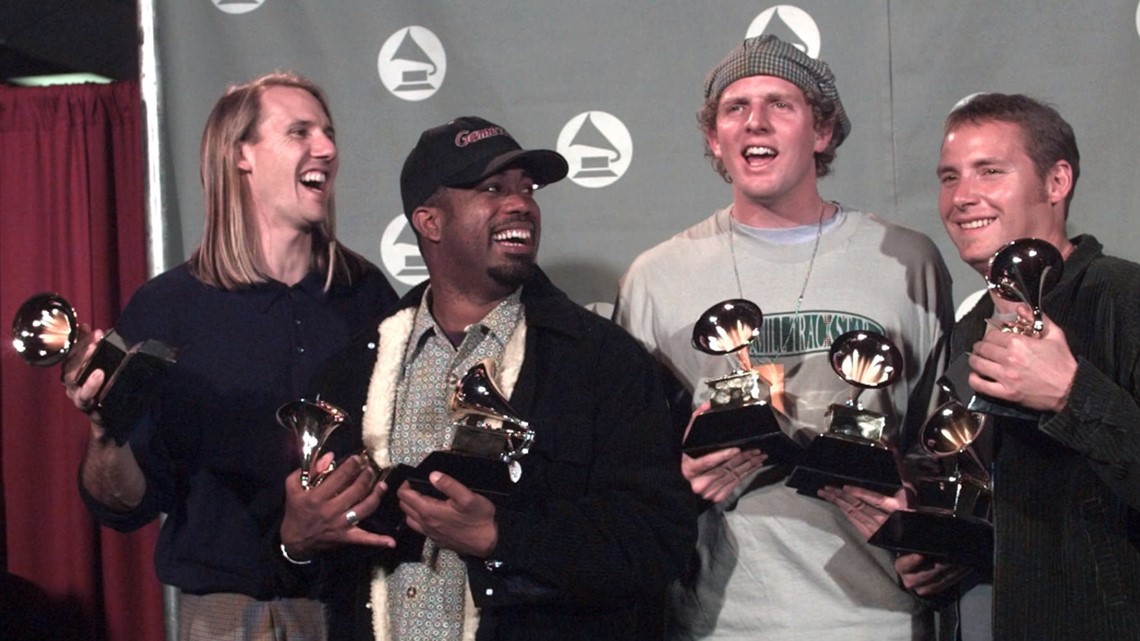
WAS IT JUST GOOD TIMING?
In the mid-1990s, the grunge sound from the Pacific Northwest — exemplified by the likes of Soundgarten, Nirvana, and Pearl Jam — ruled the music scene.
“There was a lot of angst in the music,” says Miller.
He believes that had a lot to do with Hootie’s rise in popularity – “the fact that the song ‘Hold My Hand’ was uplifting and pop-y and made people feel good was like a breath of fresh air. And it did change things dramatically.”
And there was a tremendous backlash from national music critics.
“It was like, this band didn’t deserve all the accolades and sales, that they were just sort of a superficial pop band — and had that college band, frat-band stigma.
“It never bothered those guys at all. I mean, they just played what they played, what they wrote, and, of course, they had Darius’ voice at the front of everything and that made everything that much more powerful.
“They played through all that and they toured.
“It’s a lot easier — when you’re selling millions of records – to listen to a little criticism and go, you know, ‘well, that’s OK’.
“They just did their thing and were always true to themselves.
“They were close, like a family, the four guys in the band…and their manager, and the sound guy…really devoted to each other. I think that’s what helped them along and got them through some things and stay positive and achieve what they did.”
All these years later, national music critics are taking another look at the band, reassessing the music of Hootie and the Blowfish, and almost apologizing for the harsh reviews from 25 years ago. Both The New York Times and Rolling Stone have written pieces about the band: Jon Caramanica at The NY Times saying “Let me stop here to emphasize a truth that has gone unsaid for too long: At its peak, Hootie & the Blowfish was a genuinely excellent band. Earthen, soothing, a little ragged. And also deft, flexible and unflashily skilled. It splendidly blended the Southern college rock of the late 1980s (the dBs, R.E.M.) with shades of vintage soul, bluegrass, blues and more, rendering it all with omnivorous-bar-band acuity. In the gap between late grunge and the commercial rise of hip-hop and rap-rock, Hootie was a balm.”
Miller says, “It’s pretty fascinating to watch what people are saying now, talking more about the roots of their music and how they were a better band, more compositionally talented, they mined a lot of gospel and soul and American roots music. And it’s really fascinating to hear those critics now, talking about the same songs 25 years ago they wanted to toss away, now they’re analyzing them like the great pop hits that they are. You can’t deny that ‘Let Her Cry’ and ‘I Only Wanna Be With You’ are gonna be pop hits forever. They’re gonna get played for a long, long time.
“That, in and of itself, is a huge achievement.”
WHY THERE WAS NO “NEXT HOOTIE”
Miller was often asked why other bands from Columbia — or South Carolina — didn’t make it as big as Hootie.
He responds, “It truly is sort of a magical time of something having to happen at a certain time, with a certain sound, a certain band that’s in a position, and then there’s a tremendous amount of luck and good fortune involved when something like this happens.
“When Hootie got successful in the mid-90s, you still had major record labels that would sign a band, and give you a big advance, help you make that record, and then have a big marketing and promotion budget to help you go on tour, and now, that infrastructure is gone…pretty much completely.
“It used to be that you could go to the radio stations and talk to the DJs in certain markets across the country and get them to play your songs. A lot of that has gone away. Now everything is either streaming or digital, Spotify or Pandora, or a lot of different things, different platforms for music that are totally different from what they were 25 years ago.
“It just was always a special time that it just happened when it did, and, personally, I’m glad that it happened to a band from Columbia, SC.”

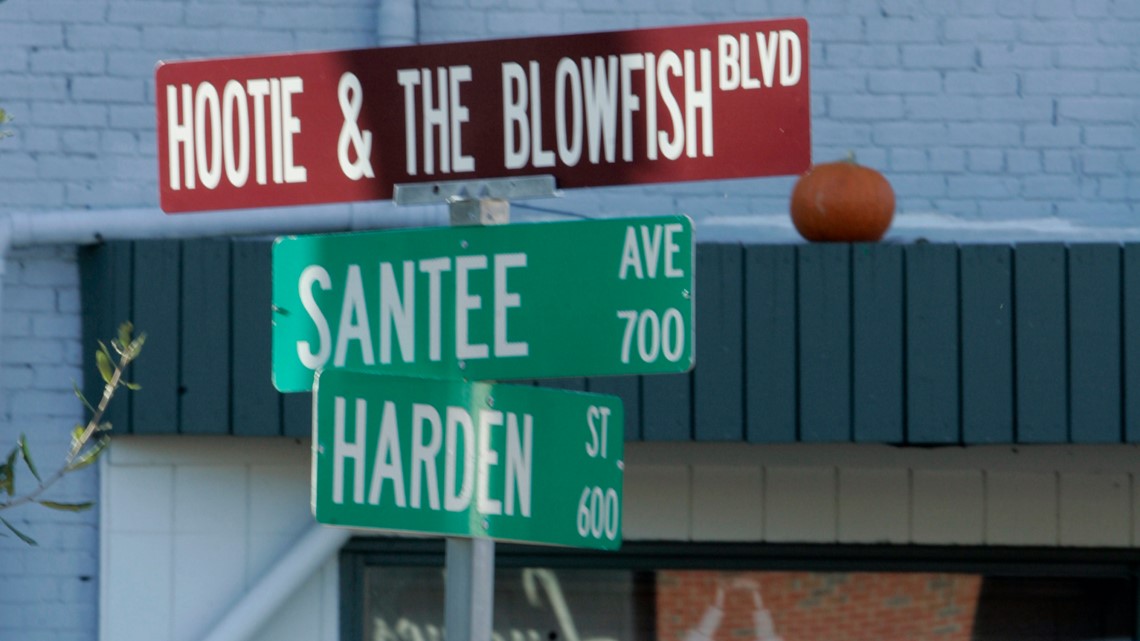
THE GROUP THERAPY TOUR
Will there be a resurgence of Hootiemania in 2019?
- The band is winding up the Group Therapy Tour — named after a favorite Five Points bar — with a three-night stand at Colonial Life Arena.
- They kicked off the tour with an appearance on The Late Show with Stephen Colbert on May 1, performing “Hold My Hand” -- the song the band played during the first appearance on Letterman and then on Letterman's last "Late Show" -- and many shows across the country were sold out.
- The concert set list is said to contain a mix of old Hootie songs, Darius’ country hits, some of the band’s favorite covers, and new original music.
- Cracked Rear View has been re-released -- and includes Coochiepop, Hootie and the Blowfish’s first recording of 7 or 8 songs that the band sold at concerts (about 20,000 copies) when the group was just starting out.
- Hootie and the Blowfish have a new album, Imperfect Circle, that will be released on November 1.

